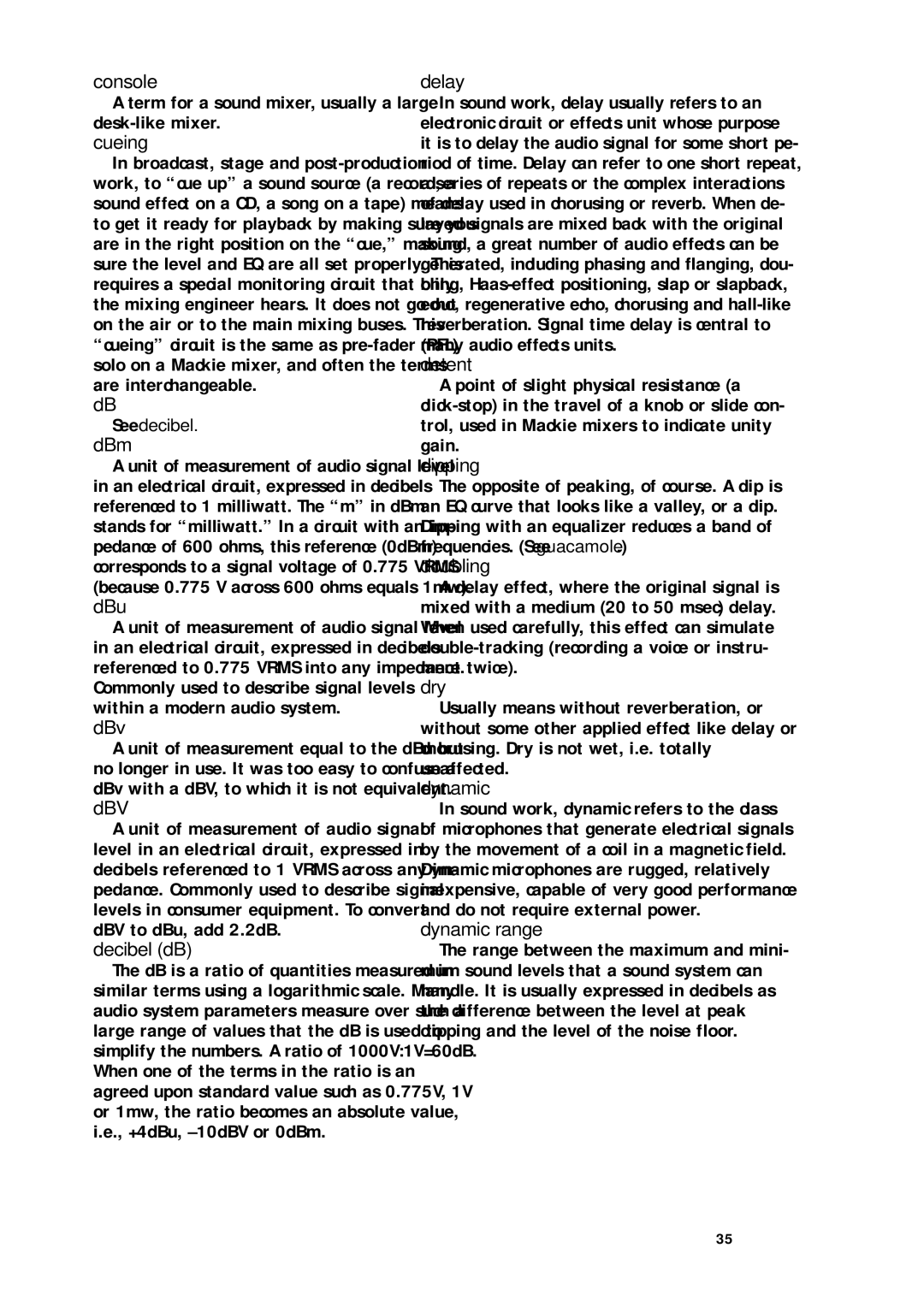console
A term for a sound mixer, usually a large
cueing
In broadcast, stage and
dB
See decibel.
dBm
A unit of measurement of audio signal level in an electrical circuit, expressed in decibels referenced to 1 milliwatt. The “m” in dBm stands for “milliwatt.” In a circuit with an im- pedance of 600 ohms, this reference (0dBm) corresponds to a signal voltage of 0.775 VRMS (because 0.775 V across 600 ohms equals 1mw).
dBu
A unit of measurement of audio signal level in an electrical circuit, expressed in decibels referenced to 0.775 VRMS into any impedance. Commonly used to describe signal levels within a modern audio system.
dBv
A unit of measurement equal to the dBu but no longer in use. It was too easy to confuse a dBv with a dBV, to which it is not equivalent.
dBV
A unit of measurement of audio signal level in an electrical circuit, expressed in decibels referenced to 1 VRMS across any im- pedance. Commonly used to describe signal levels in consumer equipment. To convert dBV to dBu, add 2.2dB.
decibel (dB)
The dB is a ratio of quantities measured in similar terms using a logarithmic scale. Many audio system parameters measure over such a large range of values that the dB is used to simplify the numbers. A ratio of 1000V:1V=60dB. When one of the terms in the ratio is an agreed upon standard value such as 0.775V, 1V or 1mw, the ratio becomes an absolute value, i.e., +4dBu,
delay
In sound work, delay usually refers to an electronic circuit or effects unit whose purpose it is to delay the audio signal for some short pe- riod of time. Delay can refer to one short repeat, a series of repeats or the complex interactions of delay used in chorusing or reverb. When de- layed signals are mixed back with the original sound, a great number of audio effects can be generated, including phasing and flanging, dou- bling,
detent
A point of slight physical resistance (a
dipping
The opposite of peaking, of course. A dip is an EQ curve that looks like a valley, or a dip. Dipping with an equalizer reduces a band of frequencies. (See guacamole.)
doubling
A delay effect, where the original signal is mixed with a medium (20 to 50 msec) delay. When used carefully, this effect can simulate
dry
Usually means without reverberation, or without some other applied effect like delay or chorusing. Dry is not wet, i.e. totally unaffected.
dynamic
In sound work, dynamic refers to the class of microphones that generate electrical signals by the movement of a coil in a magnetic field. Dynamic microphones are rugged, relatively inexpensive, capable of very good performance and do not require external power.
dynamic range
The range between the maximum and mini- mum sound levels that a sound system can handle. It is usually expressed in decibels as the difference between the level at peak clipping and the level of the noise floor.
35
